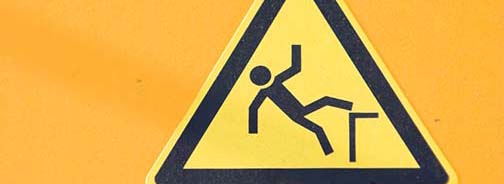Safety Resources for Brain Injury Prevention and Recovery
Once a person has a brain injury, he/she is three times more likely to have a second brain injury. After the second brain injury, the odds of having a third brain injury increase by eight times.
Because there may be problems with judgment, decision making, motor control and impulsivity, personal safety must be a priority to prevent re-injury.
While it is important to promote independence, it is necessary to make sure the environment is safe.
Important Fact: Most accidents occur in the kitchen and bathroom, the places where people spend the most time.
Do you have any of these objects in your home?
Common household items including car keys, medications and sharp objects may not have previously been dangerous to keep in your home. Since having a brain injury, it is now important to keep your surroundings clear and free from sharp objects, fire hazards, medicines, poisons, heavy machines and weapons.
Please keep these potentially dangerous items locked up away from loved ones. You may still keep these items in your home but they now require special safeguards, ideally LOCKED UP.
Personal Safety – Steps to reduce behavioral issues including overstimulation, confusion and aggression
- Limit number of visitors and length of visits.
- Avoid events that are noisy and crowded.
- Avoid alcoholic drinks/drugs.
- Ask your doctor before taking new medications.
- Keep the day as structured as possible.
- Get enough sleep and take rest breaks throughout the day.
- Wear a MedicAlert bracelet.
- Keep light source (including flashlight) in easy reach. Maintain good lighting in all environments.
In this section you will find information on the following areas that pertain to safety after a brain injury. Not all of these will affect everyone that has sustained a brain injury.
Functioning Safely in the Home
Functioning within the home environment following a brain injury may be impacted in several different ways. One must take into consideration physical limitations leading to accessibility challenges, activity modifications for cognitive challenges, environmental adaptations for safety, as well as consider ways in which the caregiver can best support and assist a person with a brain injury as the level of function changes and improves, and as independence continues to build.
This section will provide overviews and resources for:
- Home Accessibility and Safety and Safety Checklist Worksheet
- Home Modification video and General Home Safety Devices
- Living Room Modification video
- Bedroom Safety Devices and Bedroom Modifications video
- Bathroom Equipment, Bathroom Safety Devices and Bathroom Modifications video
- Kitchen Safety Devices and Dining Room Table Modifications video
Emergency Preparedness
In this section you will find information on the following areas that pertain to safety after a brain injury. Not all of these will affect everyone that has sustained a brain injury.
- Smoke Detectors and where to place them within your home / Espanol
- How to plan an Evacuation Route / Espanol
- Fire Safety in a Condo
- Basic Disaster Supply Kit (multiple languages available)
- First Aid and CPR
- Personal Safety Profile and Public Safety notifications Smart911 and Wireless Emergency Alerts (WEAs)
- Natural Disaster Relief through American Red Cross
- Assistance with shelter after a disaster - Federal Emergency Management Agency (FEMA)
Click here to learn more about Shepherd Center's RESCUE Program for guidance in communication your needs to your own First Responders.


